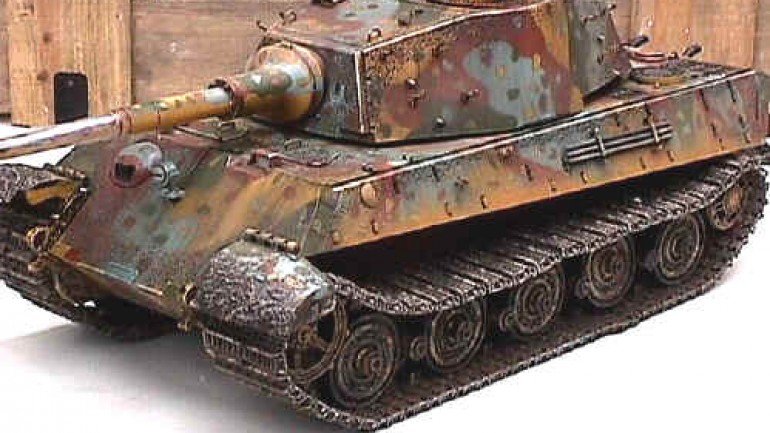The Tiger Tanks Tiger I is the common name of a German heavy tank of World War II. The initial official German designation was Panzerkampfwagen VI Ausführung H (abbreviated PzKpfw VI Ausf. H, Ausführung is German for “version”) but the tank was redesignated as Panzerkampfwagen VI Ausf. E in March 1943. The tank also had the ordnance inventory designation SdKfz 181.
The Tiger I was in use from late 1942 until the German surrender in 1945. It was given its “Tiger” nickname by Ferdinand Porsche (the roman numeral was added after the Tiger II was produced). The design served as the basis for other armoured vehicles, the Sturmtiger heavy self-propelled gun and the Bergetiger amoured recovery vehicle.
The Tiger’s crew training manual, the Tigerfibel, became a souvenir item after WWII. Tiger II is the common name of a German heavy tank of the Second World War. The official German designation was Panzerkampfwagen VI Ausf. B and the tank also had the ordnance inventory designation SdKfz 182. It is also known under the informal name Königstiger (German: Bengal Tiger), often literally translated as King Tiger and by the British as Royal Tiger.
The Tiger II combined the heavy armor of the Tiger I with the sloped armor of the Panther. The design followed the same concept as the Tiger I, but was intended to be even more formidable. The Tiger II chassis supplied the basis for the Jagdtiger turretless tank destroyer. The Tiger II weighed 68.5 (early turret) to 69.8 (production turret) tonnes, was protected by 150 to 180 mm of frontal armor, and was armed with the 88 mm KwK 43 L/71 gun.
The very heavy armor and powerful long-range gun gave the Tiger II the advantage against virtually all opposing tanks. This was especially true on the Western Front, where the British and U.S. forces had almost no heavy tanks with which to oppose it. In a defensive position it was difficult to destroy, but offensively it performed with less success.
The Tiger II performed very well against Allied and Soviet tanks. Defensively, the M4 Sherman was unable to penetrate the front even at point blank and the M26 Pershing and IS-2 had to come within 1300 m and 200 m respectively
The Tiger II was widely photographed due to its large size and propaganda value. Sturmtiger is the common name of a World War II German assault gun built on the Panzer VI Tiger I chassis and armed with a large naval mortar, the 38 cm SturmMörser RW61 L/5.4. Its primary task was to provide heavy fire support for infantry units fighting in urban areas. Only 18 were built in total, from battle-damaged Tiger tanks. The vehicle is also known under the names Tiger-Mörser, Sturmmörser Tiger and Sturmpanzer VI.
Bergetiger The Bergetiger was the name the allied forces gave to a German World War II armored tracked vehicle based on the Tiger I chassis. The vehicle was found abandoned on a roadside in Italy with terminal engine problems. The main gun had been removed, and a boom & winch assembly had been fitted to the turret. No other Tiger tanks modified in this manner were ever recovered.Jagdtiger Panzerjäger Tiger Ausf. B Jagdtiger (Sd. Kfz. 186) was a German tank destroyer (self-propelled anti tank gun) Jagdpanzer of World War II. It saw service from late 1944 to the end of the war on both the Western Front and Eastern Front. The Jagdtiger was the heaviest armored fighting vehicle to see service during World War II.





This is the best website for anybody who desires to find out about this subject. You notice so much its almost onerous to argue with you (not that I truly would want…HaHa). You undoubtedly put a brand new spin on a topic thats been wrote about for years. Nice stuff, simply nice!